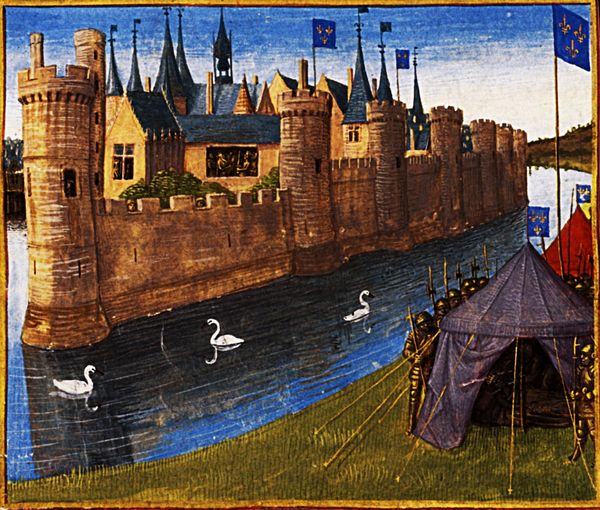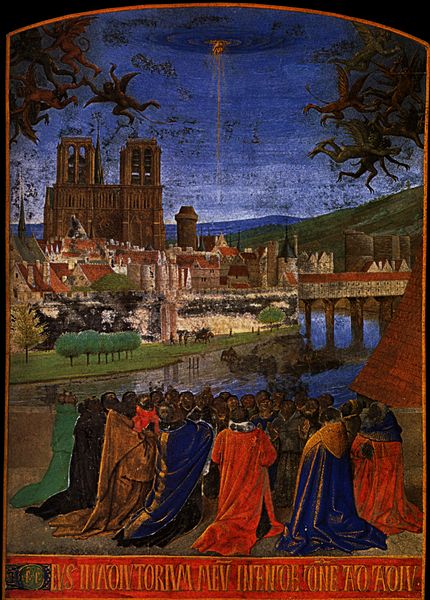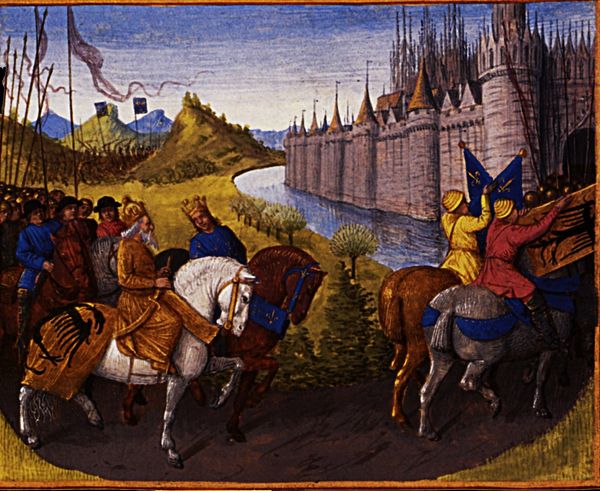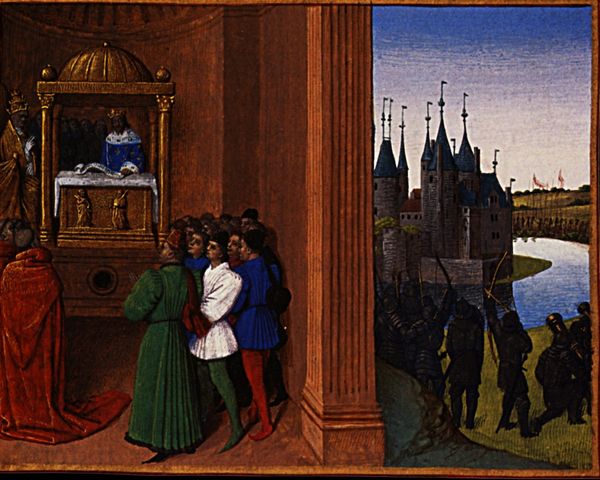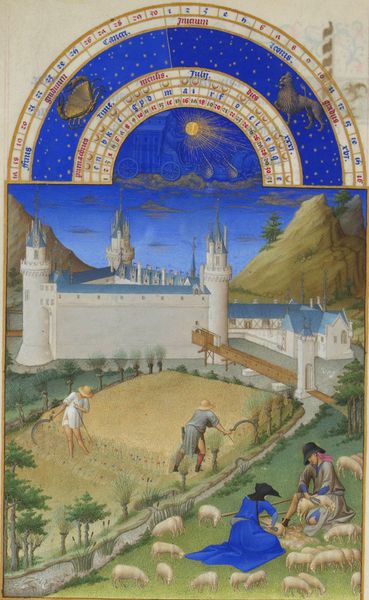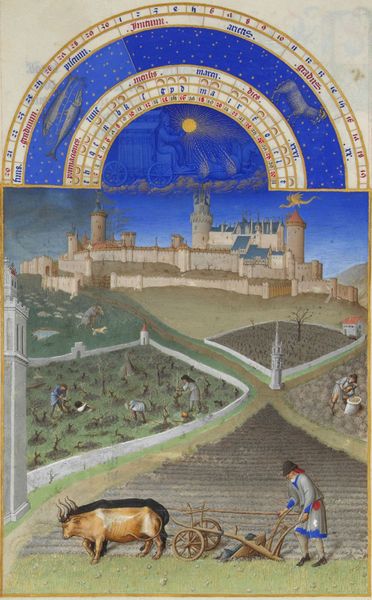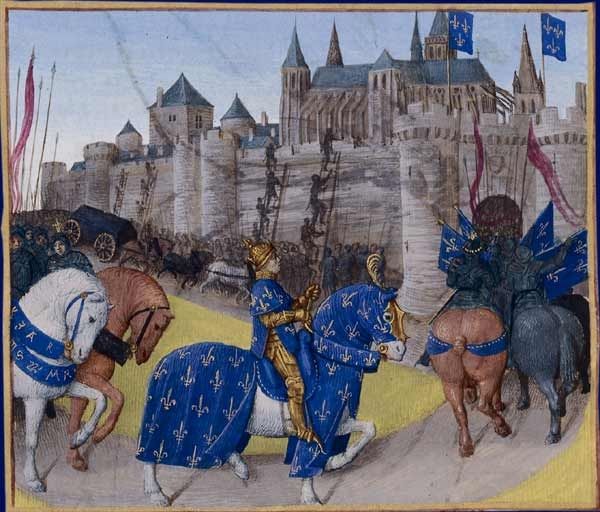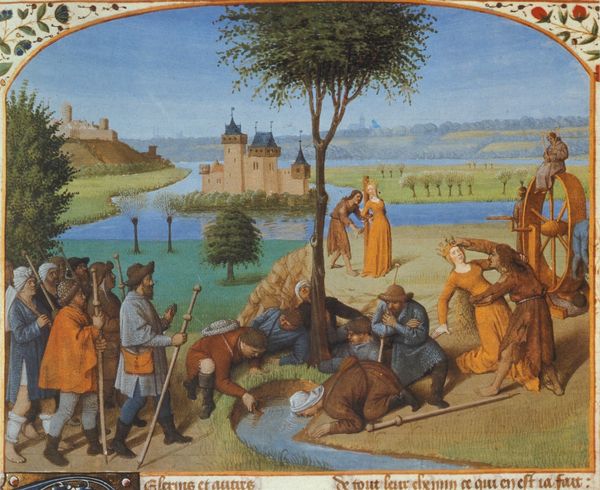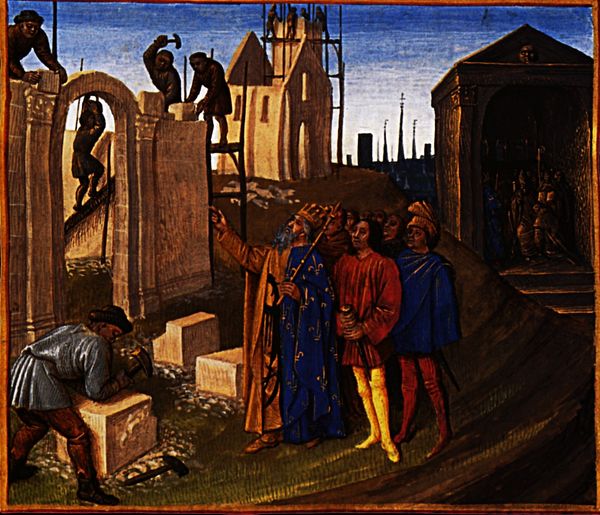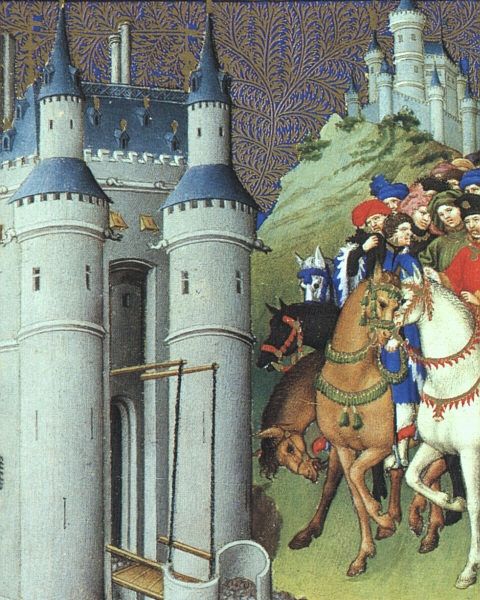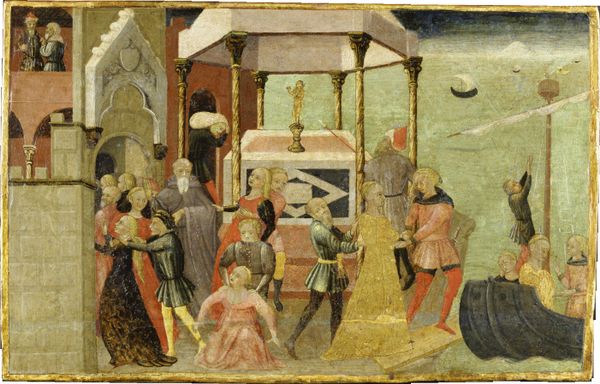
Death of William Longsword 1460
0:00
0:00
jeanfouquet
Bibliothèque nationale de France (BnF), Paris, France
tempera, painting
#
medieval
#
narrative-art
#
tempera
#
painting
#
landscape
#
figuration
#
history-painting
#
italian-renaissance
#
miniature
#
watercolor
Copyright: Public domain
Editor: Here we have "Death of William Longsword," painted around 1460 by Jean Fouquet. It’s tempera on parchment, a miniature from a manuscript, I believe. I'm struck by how the serene, almost fairytale landscape contrasts with the grim event taking place in the foreground. How do you read this juxtaposition? Curator: It's interesting you pick up on that tension. It’s as if Fouquet is setting the stage for a tragedy, making the scene feel both monumental and deeply personal, don't you think? I mean, look at how precisely each element is rendered, yet there's a dreamlike quality to the light. It's as if the entire world is bearing witness to a single, terrible moment. Does that make sense? Editor: Absolutely! It's like he's creating a kind of historical stage set, where the personal drama of the characters is played out against this grand, indifferent backdrop. It makes me wonder what the location is intended to represent, any thoughts? Curator: Ah, now you're diving deeper! This is more than just scenic backdrop. The architectural details, like the imposing castle, echo the political powers at play. I think Fouquet uses the landscape and architectural elements to reinforce the weight of history. Editor: That’s a good point! So the castle and idyllic setting almost underscore the cold, calculated nature of William's assassination? I initially saw a visual dichotomy, but now I get a sense of Fouquet's trying to show something about history's grand narrative versus the stark reality for individuals caught within it. It’s a world where momentous historical events are both inevitable and ruthlessly intimate. Thank you for your insight!
Comments
No comments
Be the first to comment and join the conversation on the ultimate creative platform.
